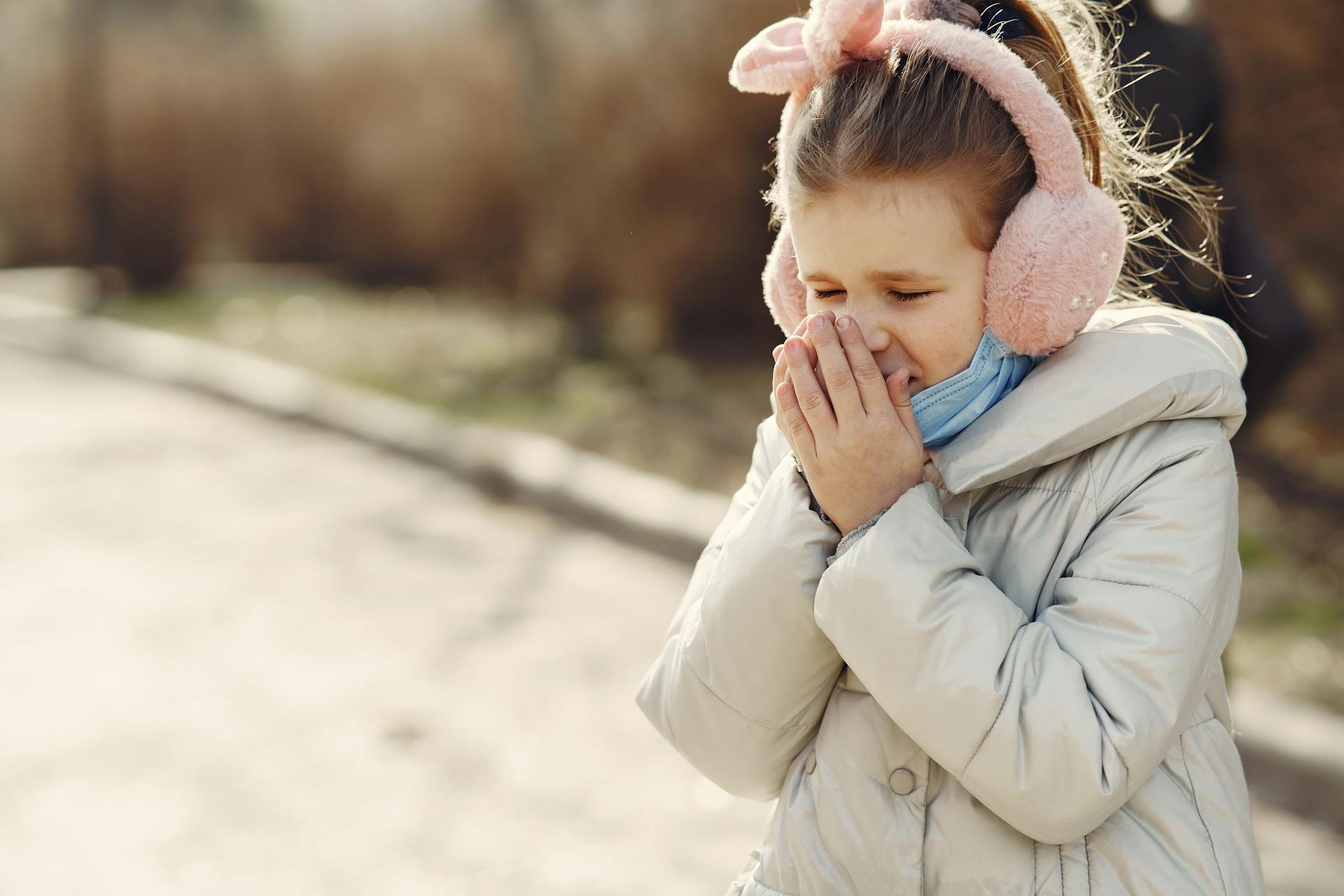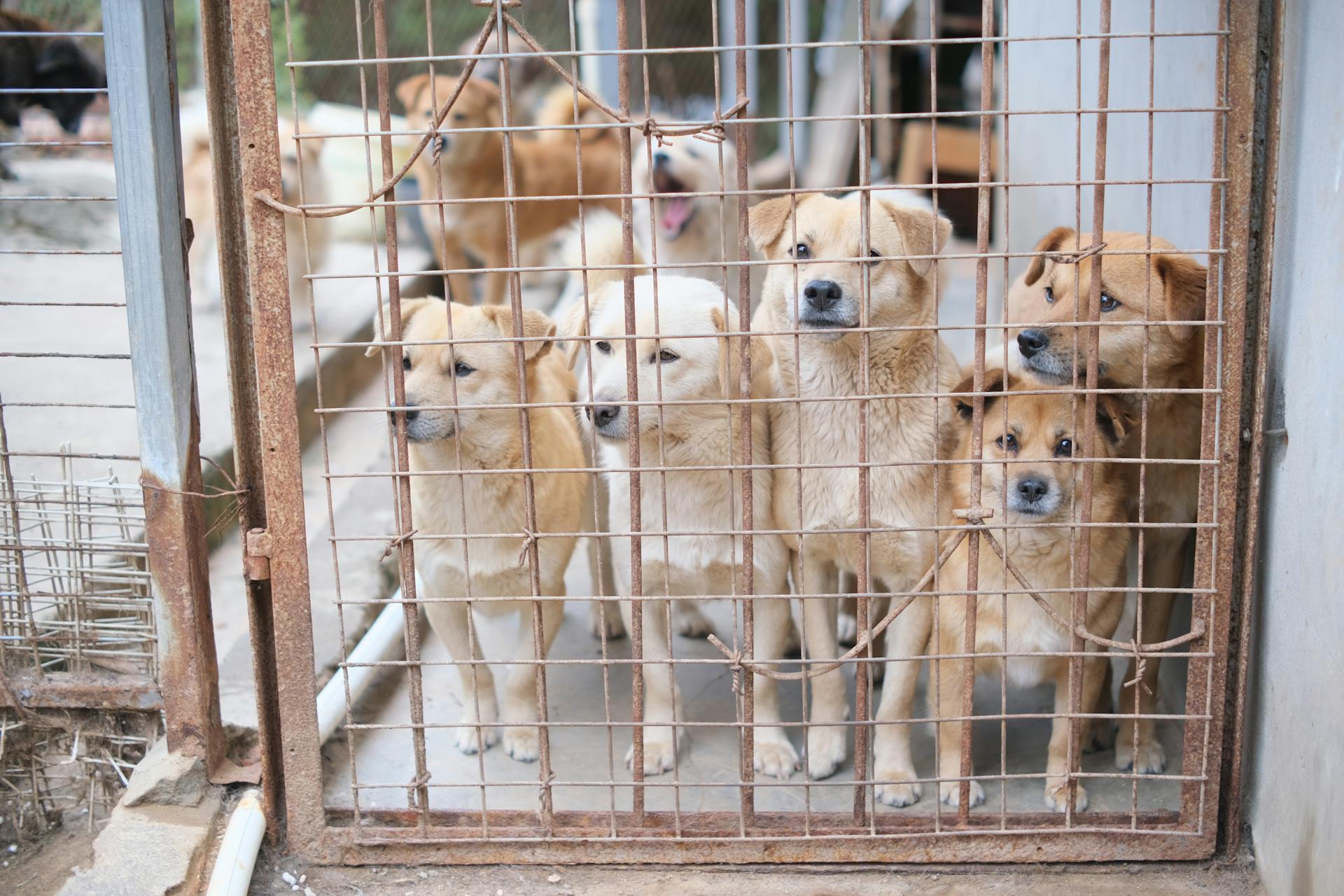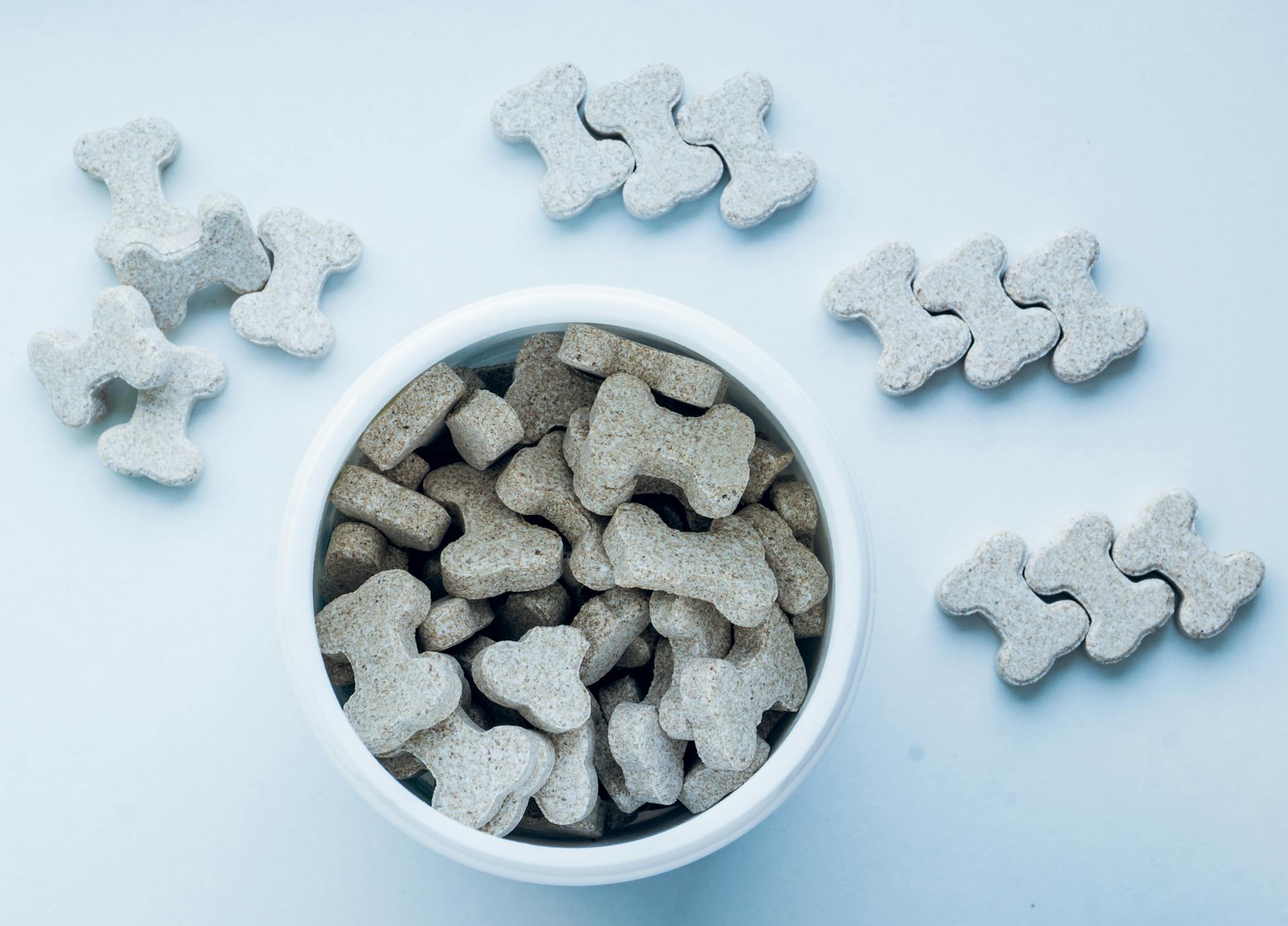
Reverse sneezing in dogs can be a distressing experience for both pets and their owners. It's a common issue that affects many breeds.
Reverse sneezing episodes can last anywhere from a few seconds to a few minutes. In some cases, they can even occur in rapid succession.
Dogs with elongated soft palates, such as Bulldogs and Pugs, are more prone to reverse sneezing. This is because their unique anatomy can cause their airways to become easily irritated.
Symptoms of reverse sneezing include loud, hacking sounds, a blue-tinged tongue, and a frantic demeanor.
Causes and Symptoms
Reverse sneezing in dogs can be a concerning sight, but understanding its causes and symptoms can help you better care for your furry friend.
Symptoms of reverse sneezing include gasping, difficulty drawing air, an extended neck, and snorting, which usually clear up within one to two minutes. These symptoms can be alarming, but they're often harmless.
Some breeds, like pugs and bulldogs, are more prone to reverse sneezing due to their smaller nasal passages and airways. This is likely why they struggle with reverse sneezing more frequently than other breeds.
Consider reading: Brachycephalic Dogs Breeds
If your dog is experiencing reverse sneezing, it's essential to rule out other conditions, such as tracheal collapse, which can be a genetic disorder in Yorkshire terriers. Tracheal collapse can cause exercise intolerance, labored breathing, and a bluish tinge to the gums and mucous membranes.
Common causes of reverse sneezing include blockages in the nose or throat, and allergens like candles and perfumes. If you notice your dog's episodes happening around fragrances, it's likely one of the causes.
Here are the common symptoms of reverse sneezing:
- Gasping
- Difficulty drawing air
- Extended neck
- Snorting
If your dog is experiencing regular episodes, a visit to the veterinarian is essential to rule out underlying conditions.
Relieving Congestion
Sometimes all it takes is a few moments of helping your dog calm down to help relax their nasal passages. Petting their head and neck can help the muscles relax enough to allow them to breathe easier. Take a few minutes to stroke their neck and head allowing them to slow down their breathing.
Drinking water can also help clear out the throat and nasal passages, making it easier for your dog to breathe normally again. Encourage your dog to take slow sips to avoid choking on the water while they're still breathing rapidly.
Covering your dog's nostrils for a few seconds can sometimes dislodge anything stuck and help clear out their nose.
Veterinary Care
Most dogs experiencing reverse sneezing do not need medical treatment. Your vet may be able to identify the cause and administer the necessary medication if the problem is recurrent or accompanied by other symptoms.
In most cases, no treatment is required for regular reverse sneezing episodes. However, if nasal mites are discovered to be the source of excessive reverse sneezing, they can be treated with a relevant parasite medication.
Veterinary Professionals
Veterinary Professionals play a crucial role in providing top-notch care for our furry friends. They are often the first line of defense against illnesses and injuries, and their expertise is invaluable in keeping our pets healthy and happy.
If your dog is experiencing reverse sneezing episodes, your vet might suggest a few treatments to help manage the condition. Most dogs don't need medical treatment, but your vet can provide guidance on how to make your dog feel more comfortable during episodes.
Dog Treatment
Most dogs experiencing reverse sneezing do not need medical treatment. However, if the episodes persist or are accompanied by other symptoms, your vet may be able to identify the cause and administer the necessary medication.
In most cases, no treatment is required for regular reverse sneezing episodes. If nasal mites are discovered to be the source of excessive reverse sneezing, they can be treated with a relevant parasite medication.
If your dog is experiencing reverse sneezing on a regular basis, a visit to the veterinarian is essential to rule out conditions like tracheal collapse. Tracheal collapse is a genetic disorder that is most common in Yorkshire terriers and can occur at any age.
To help your dog during an episode, petting their head and neck can help relax their nasal passages. Sometimes, all it takes is a few moments of calmness to help them breathe easier.
Drinking water can also help clear out the throat and nasal passages, but it's essential to encourage your dog to take slow sips to avoid choking. Covering your dog's nostrils for a few seconds can also help clear out their nose and dislodge anything stuck.
Here are some tips to help your dog during a reverse sneezing episode:
- Petting their head and neck to relax their nasal passages
- Drinking water slowly to clear out the throat and nasal passages
- Covering their nostrils for a few seconds to dislodge anything stuck
Frequently Asked Questions
What is reverse sneezing episodes?
Reverse sneezing episodes are sudden, loud inspiratory noises caused by irritation in the nasal passages, often accompanied by labored breathing. These episodes can be distressing for pets and their owners, but are usually harmless and temporary
Sources
- https://wagwalking.com/condition/reverse-sneezing
- https://www.ethosvet.com/blog-post/reverse-sneezing-in-dogs/
- https://shawsheenanimalhospital.com/understanding-reverse-dog-sneezing/
- https://bettervet.com/resources/pet-health-care/reverse-sneezing-in-dogs
- https://www.pethonesty.com/blogs/blog/causes-and-remedies-reverse-sneezing
Featured Images: pexels.com


